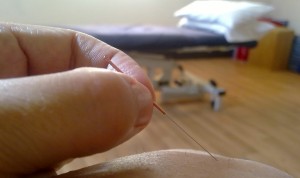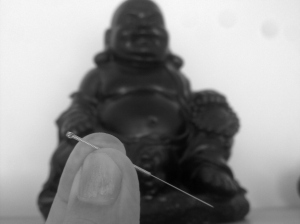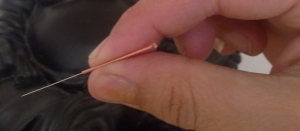Sue Snelgrove is a member of the British Medical Acupuncture Society and an Advanced Member of the Acupuncture Association of Chartered Physiotherapists having trained in Acupuncture in both the Traditional Chinese Medicine and Western approach, including electroacupuncture. She works in private clinics and private hospitals around Kent, providing treatment in Staplehurst, Marden, Cranbrook, Benenden, Sandhurst, Maidstone and Hastings.
She is registered with the Health Professions Council and has more than 20 years experience working with a variety of different conditions. As a physiotherapist as well as an acupuncturist, she is able to combine acupuncture with other techniques such as soft tissue mobilisation, exercise therapy and massage where appropriate.
Please contact littleloddington@gmail.com or ring 07739 730583 for further information, for all your Acupuncture and Physiotherapy needs. Appointments are available in Staplehurst daytime, evenings and weekends.




Licence now approved
New research confirms that acupuncture reduces lower back pain. Researchers conclude that acupuncture reduces pain, lowers absenteeism from work and prevents relapses. Lower back treatments reduce pain. The researchers also conclude that adding special acupuncture points, called confluent points, adjusted for the time of day that acupuncture treatments are administered significantly enhances clinical outcomes for patients with chronic lower back pain.
In related research, a new study finds acupuncture combined with massage is more effective for treating lumbar disc herniations than coenzyme B12 injections combined with physiotherapy. The acupuncture group achieved an overall success rate of 96.7% and the injection therapy group had an 80.0% success rate. A lumbar disc herniation is when a vertebral disc’s soft center extrudes through a rupture or tear in the outer fibrous ring. This may lead to pain, numbness, weakness and impaired range of motion.
A related statistical analysis of many studies confirms that acupuncture is effective for the relief of lower back pain. A meta-analysis of 11 controlled trials concludes that “current evidence is encouraging in that acupuncture may be more effective than medication….” The quality of the study was high in that researchers examined placebo-sham, randomized-controlled investigations to ensure objectivity. The research team concluded, “Compared with nonsteroidal anti-inflammatory drugs, acupuncture may more effectively improve symptoms of acute LBP (lower back pain).”
HealthCMi
These studies come at a time when German researchers have discovered that an endogenous chemical responsible for pain reduction is stimulated by acupuncture needling. The anti-pain chemical is CXCL10. Acupuncture stimulates its expression which then reduces pain and inflammation by activating endogenous opioids. The researchers add that acupuncture causes long-term pain reduction citing that acupuncture “elicited long-term antinociception.” Antinociception is a reduction in sensitivity to pain through pain receptors. The researchers found that CXCL10 regulates “opioid-containing macrophages as (a) key regulator of electroacupuncture-induced antinociception.”
References:
Bahrami-Taghanaki, H., Y. Liu, H. Azizi, A. Khorsand, H. Esmaily, A. Bahrami, and Zhao B. Xiao. “A randomized, controlled trial of acupuncture for chronic low-back pain.” Alternative therapies in health and medicine 20, no. 3 (2013): 13-19.
Mai, Lei, Qianyang, Li. “Efficacy Observation on Acupuncture on Trigger Point of Myofascial Pain Combined with Massage Treating Lumbar Disc Herniation.” Chinese Manipulation & Rehabilitation Medicine, 5.3 (2014): 80-81.
Acupuncture for Acute Low Back Pain: A Systematic Review. Lee, Jun-Hwan KMD, PhD; Choi, Tae-Young PhD; Lee, Myeong Soo PhD; Lee, Hyejung KMD, PhD; Shin, Byung-Cheul KMD, PhD; Lee, Hyangsook KMD, PhD. Clinical Journal of Pain:. POST AUTHOR CORRECTIONS, 6 August 2012.
Wang, Ying, Rebekka Gehringer, Shaaban A. Mousa, Dagmar Hackel, Alexander Brack, and Heike L. Rittner. “CXCL10 Controls Inflammatory Pain via Opioid Peptide-Containing Macrophages in Electroacupuncture.” PloS one 9, no. 4 (2014): e94696.
– See more at: http://www.healthcmi.com/Acupuncture-Continuing-Education-News/1304-acupuncture-cuts-low-back-pain#sthash.A3V1s7XX.dpuf